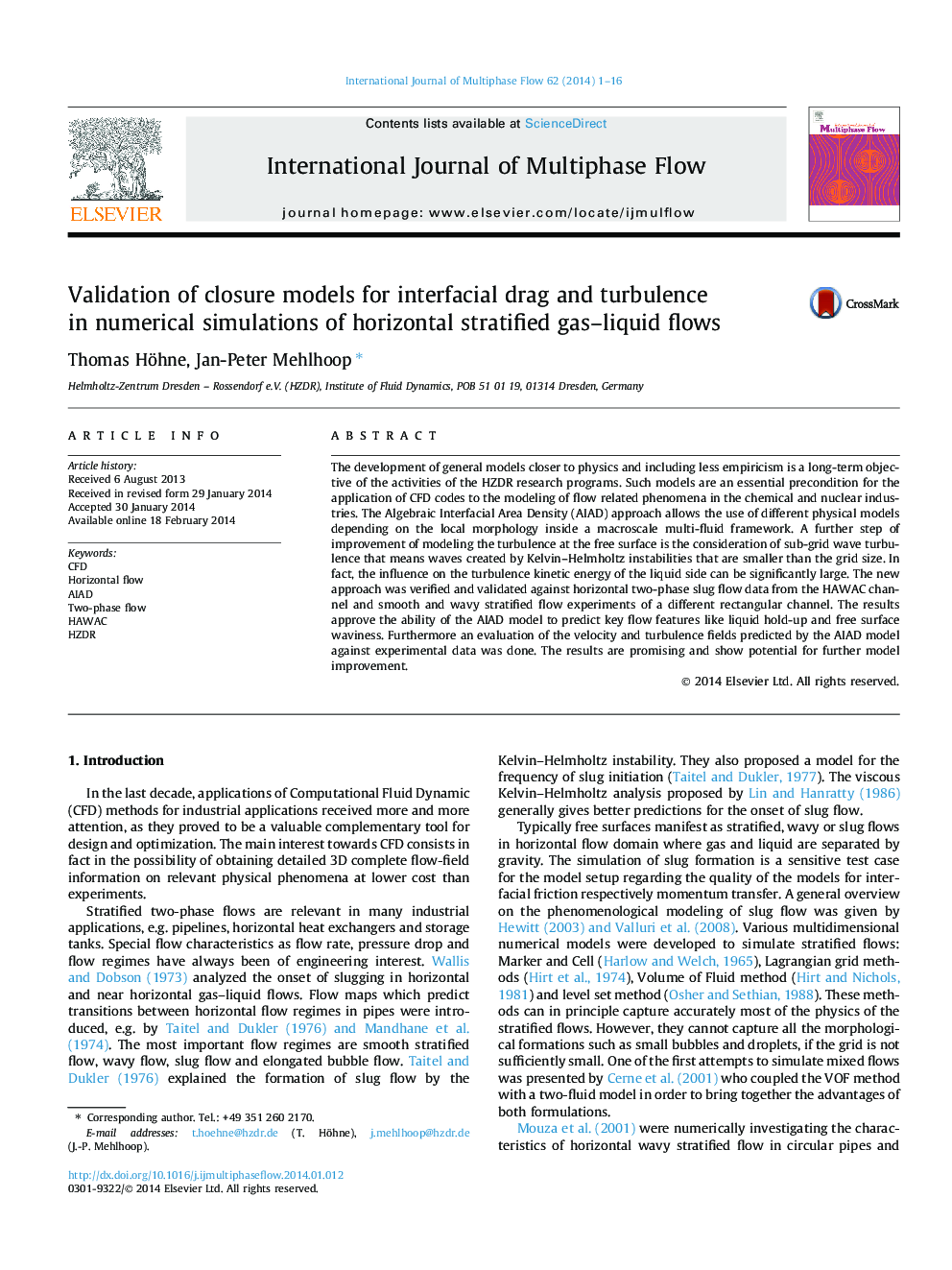| Article ID | Journal | Published Year | Pages | File Type |
|---|---|---|---|---|
| 667199 | International Journal of Multiphase Flow | 2014 | 16 Pages |
Abstract
The development of general models closer to physics and including less empiricism is a long-term objective of the activities of the HZDR research programs. Such models are an essential precondition for the application of CFD codes to the modeling of flow related phenomena in the chemical and nuclear industries. The Algebraic Interfacial Area Density (AIAD) approach allows the use of different physical models depending on the local morphology inside a macroscale multi-fluid framework. A further step of improvement of modeling the turbulence at the free surface is the consideration of sub-grid wave turbulence that means waves created by Kelvin-Helmholtz instabilities that are smaller than the grid size. In fact, the influence on the turbulence kinetic energy of the liquid side can be significantly large. The new approach was verified and validated against horizontal two-phase slug flow data from the HAWAC channel and smooth and wavy stratified flow experiments of a different rectangular channel. The results approve the ability of the AIAD model to predict key flow features like liquid hold-up and free surface waviness. Furthermore an evaluation of the velocity and turbulence fields predicted by the AIAD model against experimental data was done. The results are promising and show potential for further model improvement.
Keywords
Related Topics
Physical Sciences and Engineering
Chemical Engineering
Fluid Flow and Transfer Processes
Authors
Thomas Höhne, Jan-Peter Mehlhoop,
